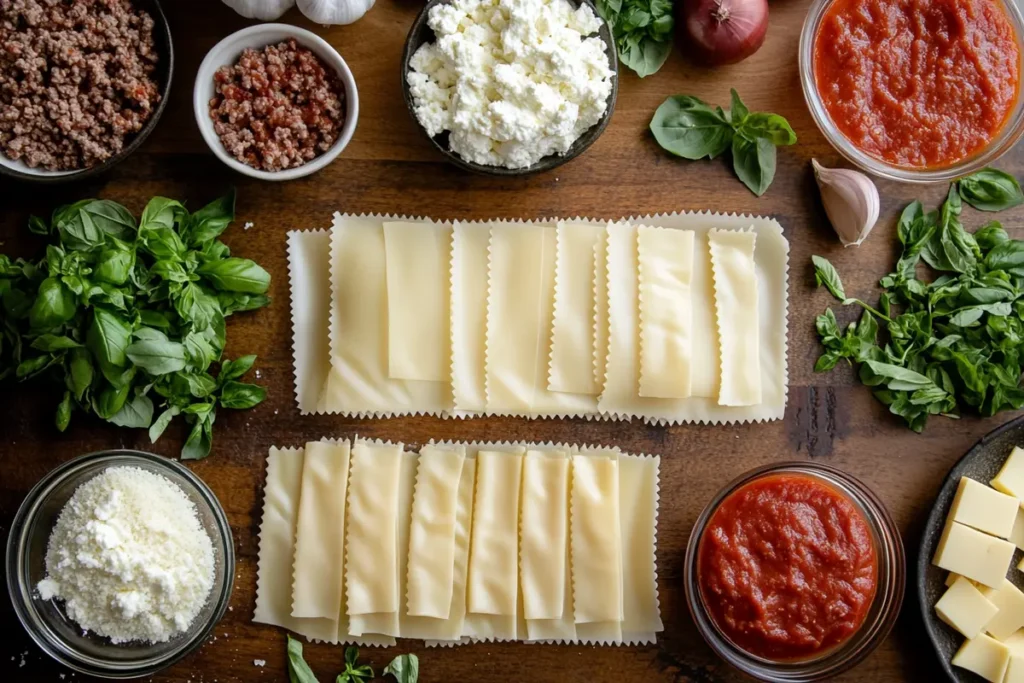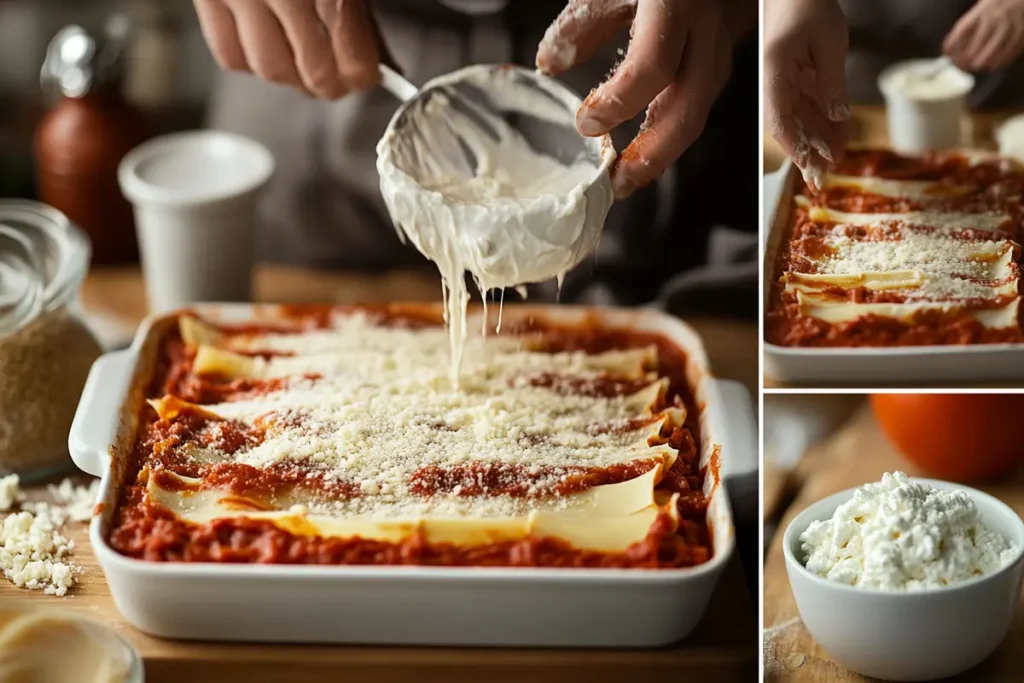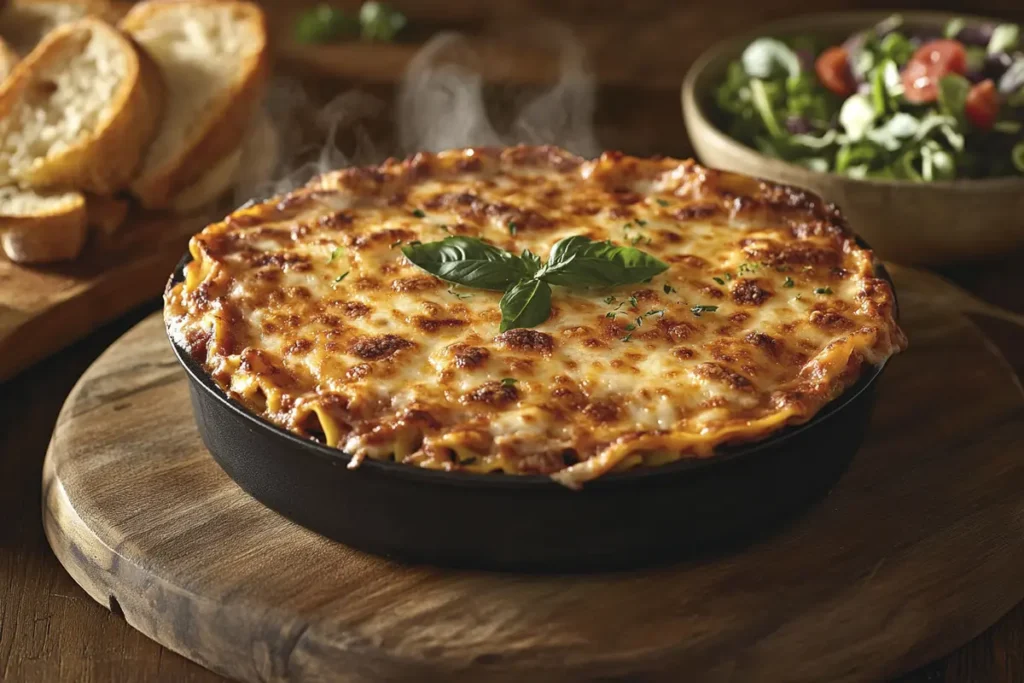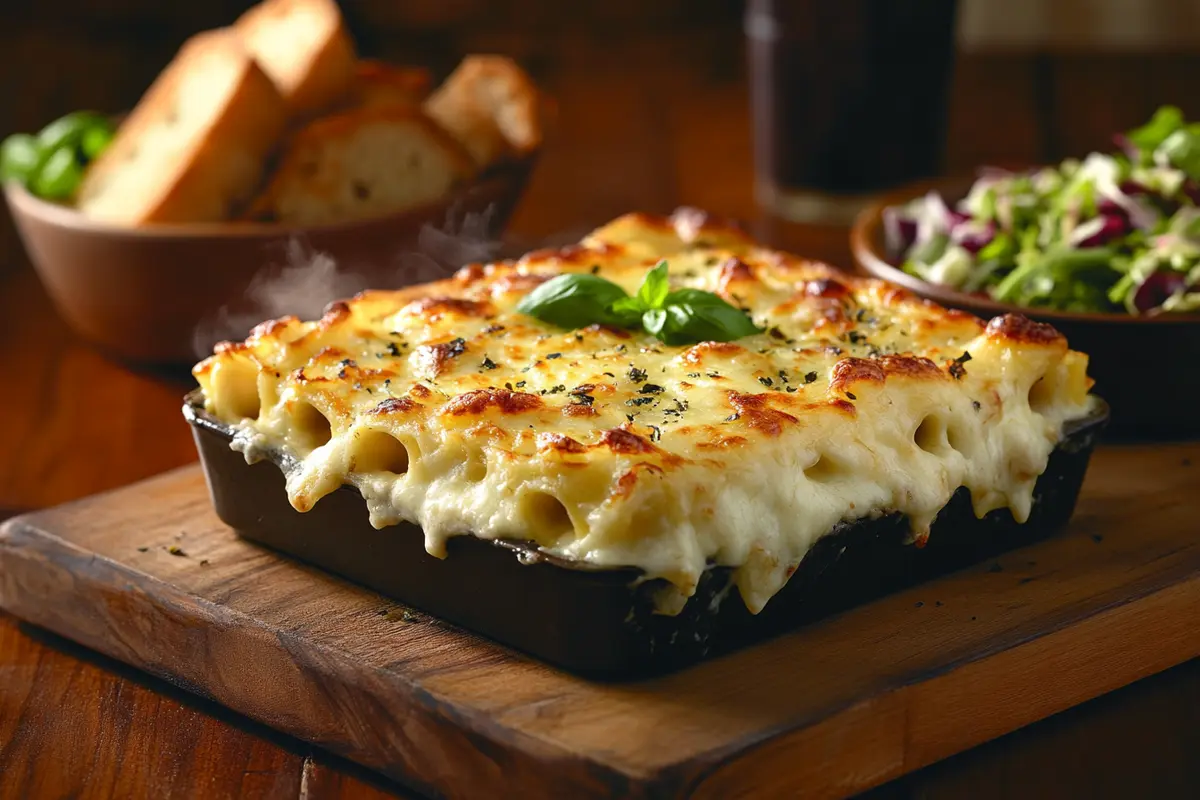Lasagna is a timeless classic that holds a special place in Italian cuisine, loved by families and food enthusiasts around the globe. Among the many variations, the Barilla Lasagna Recipe stands out for its simplicity and rich, authentic flavors. This guide walks you through everything needed to create the perfect lasagna—from choosing the right ingredients to baking it to golden perfection. Along the way, you’ll discover tips, tricks, and creative ideas to ensure your dish is both memorable and mouthwatering. Let’s dive into Part 1: understanding why Barilla lasagna is a game-changer!
Introduction to Barilla Lasagna Recipe
The Popularity of Lasagna in Italian Cuisine
Lasagna has been a staple of Italian kitchens for centuries. It represents comfort, celebration, and family traditions all rolled into one. But why has this dish gained such global admiration? Its versatility allows for endless adaptations, from hearty meat-filled layers to vegetarian alternatives, while always retaining its classic appeal. With Barilla’s expertly crafted pasta sheets, achieving a perfect lasagna has never been easier.
Why Choose Barilla for Your Lasagna?
Barilla stands as a trusted name in pasta production, renowned for its high-quality, durable lasagna sheets that cook evenly every time. Whether you’re using traditional lasagna sheets or oven-ready Barilla pasta, the results are consistently delightful. Barilla products ensure you get just the right texture and taste, no matter your skill level in the kitchen.
Their commitment to preserving the integrity of Italian recipes makes them a favorite among home cooks and professional chefs alike. Pairing these lasagna sheets with the right ingredients and techniques sets the foundation for creating a dish that’s worthy of any gathering. So, are you ready to begin this flavorful journey?
Understanding the Ingredients for Barilla Lasagna Recipe
Barilla Lasagne Sheets
The foundation of any lasagna lies in the pasta, and Barilla’s lasagne sheets are crafted with care to provide the ideal texture and durability. Whether you prefer oven-ready sheets for convenience or traditional lasagne sheets for a classic touch, Barilla offers options that cater to every cook. Their quality ensures that your lasagna holds its structure while remaining tender and delicious.

Oven-Ready vs. Traditional Lasagne Sheets
Choosing between oven-ready and traditional lasagne sheets depends on your cooking style. Oven-ready sheets save time and effort as they can be layered directly with sauce and cheese without pre-cooking. On the other hand, traditional sheets require boiling but are perfect for those seeking an authentic experience. Each option guarantees excellent results, so it’s simply a matter of preference.
Meat Options for the Sauce
A flavorful sauce is the heart of lasagna, and your choice of meat can dramatically impact the final dish. Selecting the right meat is crucial to achieving a balanced, hearty flavor.
Ground Beef vs. Italian Sausage
Ground beef is a classic choice, offering a neutral, savory profile that pairs seamlessly with other ingredients. Italian sausage, on the other hand, brings a spiced kick, often infused with fennel and herbs. Some cooks prefer a mix of both for a robust, well-rounded taste that elevates the dish.
Cheese Selection
No lasagna is complete without a medley of cheeses. The gooey, melty layers are what make this dish irresistibly indulgent.
Ricotta, Mozzarella, and Parmigiano-Reggiano
These three cheeses form the holy trinity of lasagna-making. Ricotta cheese provides a creamy, slightly tangy base, while mozzarella melts to a stringy perfection. Topping it off, Parmigiano-Reggiano adds a sharp, nutty flavor that enhances every bite. For the best results, opt for freshly grated cheese rather than pre-packaged alternatives.
Sauce Choices
A rich, flavorful sauce ties the lasagna together. Barilla’s selection of sauces offers versatility and ease, making it simple to find the perfect match for your recipe.
Marinara vs. Bolognese
Marinara sauce is a vegetarian-friendly option with a light, tangy tomato base. It’s ideal for those seeking a quicker, simpler preparation. Bolognese sauce, however, is a meat-heavy alternative, featuring ground beef or pork simmered with tomatoes, onions, and garlic. For a truly decadent lasagna, Bolognese is the way to go.
Preparing the Components
Cooking the Meat Sauce
A well-made meat sauce is the backbone of any Barilla lasagna recipe. Each step contributes to a depth of flavor that’s impossible to replicate with pre-made alternatives.
Sautéing Onions and Garlic
Begin by heating olive oil in a large skillet and gently sautéing chopped onions until translucent. Adding minced garlic at this stage brings a robust aroma and lays the groundwork for a flavorful base.
Browning the Meat
Next, add your chosen meat—whether it’s ground beef, Italian sausage, or a combination of both. Cook until browned, breaking it up into small pieces to ensure an even texture.
Simmering with Sauce
Once the meat is cooked, mix in your chosen sauce—be it marinara or Bolognese. Allow the mixture to simmer gently, letting the flavors meld together. Add salt, pepper, and Italian herbs like basil or oregano for extra depth.
Preparing the Cheese Mixture
The cheese mixture is a cornerstone of your lasagna layers. Combining the cheeses correctly ensures a creamy and cohesive texture.
Combining Ricotta, Mozzarella, and Eggs
In a mixing bowl, combine ricotta cheese, shredded mozzarella, and one or two beaten eggs. This mixture binds together beautifully, creating a layer that holds its shape when baked.
Prepping the Lasagne Sheets
Whether you’re using oven-ready or traditional sheets, preparing them correctly is crucial to a smooth assembly process.
Boiling Traditional Sheets
For traditional lasagne sheets, boil them in salted water until they’re just al dente. Overcooking can make them too soft to handle, so keep an eye on the timing.
Using Oven-Ready Sheets
Oven-ready sheets don’t require boiling, which saves time. Simply ensure that each sheet is fully covered with sauce during assembly to soften and cook evenly while baking.
Assembling the Lasagna
Layering Techniques
The secret to a well-structured Barilla lasagna recipe lies in the layering. This step ensures each slice reveals a perfect balance of pasta, sauce, and cheese. It’s a process where precision meets creativity.

Sauce Layer
Begin with a generous spread of sauce at the bottom of your baking dish. This prevents the lasagne sheets from sticking and keeps the layers moist during baking. Whether you’re using marinara or a hearty Bolognese, ensure the sauce covers the base evenly.
Pasta Layer
Next, lay down the Barilla lasagne sheets. Align them neatly to form a single layer, slightly overlapping the edges if needed. Oven-ready sheets require no pre-cooking, making this step hassle-free. For traditional sheets, ensure they’re cooked al dente and patted dry to avoid excess moisture.
Cheese Layer
Spread a thick layer of the cheese mixture over the pasta. The combination of ricotta, mozzarella, and a sprinkling of Parmigiano-Reggiano creates a luscious, creamy texture. Use a spatula to distribute it evenly, making sure to reach the edges.
Number of Layers
The number of layers defines the thickness and structure of your lasagna. It also affects cooking time and presentation.
Traditional Three-Layer vs. Five-Layer Lasagna
A traditional lasagna typically features three layers: pasta, sauce, and cheese. This classic method is quick, simple, and ideal for smaller gatherings. For a more indulgent dish, opt for five layers, alternating each ingredient to create a towering masterpiece. Five-layer lasagna not only looks impressive but also guarantees a bite filled with flavor in every forkful.
Baking the Lasagna
Oven Temperature and Timing
Baking your lasagna at the right temperature is key to achieving even cooking. Preheat the oven to 375°F (190°C) for most recipes. Place the dish on the middle rack to ensure consistent heat distribution. Bake for 30–40 minutes for a three-layer lasagna and up to 50 minutes for a five-layer version. Check for bubbling sauce and melted cheese as indicators of doneness.
Covered vs. Uncovered Baking
Covering your lasagna with aluminum foil for the first 20–30 minutes helps retain moisture and prevents the top layer from overcooking. For the final 10–15 minutes, uncover the dish to allow the cheese to develop a golden-brown crust. This balance ensures your lasagna is tender inside and crisp on top.
Achieving the Perfect Cheese Crust
For a picture-perfect lasagna, sprinkle extra Parmigiano-Reggiano or mozzarella over the top layer before baking. During the last few minutes, switch to the broil setting and keep a close eye on it. The cheese should bubble and form a golden, slightly crispy crust, elevating both the texture and flavor of the dish.
Serving Suggestions
Ideal Side Dishes
No lasagna dinner is complete without a selection of sides to complement the rich, layered flavors of your Barilla lasagna recipe. Pairing it with simple, well-chosen dishes enhances the meal without overshadowing the main event.
Garlic Bread and Salads
Garlic bread is a classic companion for lasagna. Its crispy exterior and buttery, garlicky flavor provide the perfect contrast to the soft layers of pasta and cheese. For a lighter touch, serve a fresh, crisp salad with ingredients like romaine lettuce, cherry tomatoes, cucumbers, and a tangy vinaigrette. The balance of textures and flavors will leave your guests raving.

Wine Pairings
While wine can elevate your meal, non-alcoholic beverages such as sparkling water with lemon or a chilled iced tea can also offer a refreshing counterpoint to the dish’s richness. Skip this step if wine isn’t applicable in your household or preferences.
Tips and Tricks for the Perfect Lasagna
Preventing Watery Lasagna
A watery lasagna can undermine all your hard work. To avoid this, use thick sauces and drain excess moisture from ingredients like ricotta cheese and cooked spinach. Oven-ready sheets also absorb extra liquid, helping the lasagna hold its structure.
Enhancing Flavor with Herbs
Fresh herbs like basil, parsley, and oregano can elevate the taste of your lasagna. Sprinkle chopped parsley over the cheese layer for a pop of color and flavor. A pinch of red pepper flakes in the sauce adds a subtle kick that delights the palate.
Making Lasagna Ahead of Time
Lasagna is a fantastic make-ahead dish. Assemble it a day in advance and refrigerate it, allowing the flavors to meld. Before baking, let the dish sit at room temperature for 30 minutes to ensure even cooking. Leftover lasagna can also be frozen for up to three months, making it a convenient option for busy weeks.
Variations of Barilla Lasagna
Vegetarian Lasagna Options
Lasagna can be just as delightful without meat, making it an excellent choice for vegetarians or those seeking a lighter meal. The layers of cheese, sauce, and veggies offer a harmonious blend of textures and flavors.
Using Spinach and Ricotta
Spinach and ricotta are a classic combination in vegetarian lasagna. Use fresh or frozen spinach, sautéed with garlic for added depth, and mix it with creamy ricotta cheese. Layer this mixture with Barilla’s marinara sauce and lasagne sheets for a satisfying dish packed with nutrients.
Gluten-Free Lasagna
For those with dietary restrictions, gluten-free lasagna is a game-changer. Barilla’s gluten-free pasta ensures everyone can enjoy this beloved dish without compromise.
Barilla’s Gluten-Free Pasta Range
Barilla’s gluten-free lasagne sheets are made with a blend of corn and rice, offering the same taste and texture as traditional pasta. Use them in your favorite lasagna recipe, and pair them with a thick sauce to prevent the layers from becoming soggy.
Seafood Lasagna
Seafood lasagna is a luxurious twist on the traditional recipe, perfect for special occasions or when you want to impress your guests.
Incorporating Shrimp and Scallops
Layer cooked shrimp and scallops between lasagna sheets, alternating with a rich béchamel sauce and shredded mozzarella. Add a touch of garlic and parsley for a dish that’s brimming with coastal flavors. This variation is light yet indulgent, ideal for seafood lovers.
Frequently Asked Questions
Can I freeze leftover lasagna?
Absolutely! Lasagna freezes exceptionally well. Allow it to cool completely, then portion it into airtight containers or wrap individual slices in plastic wrap and foil. Store it in the freezer for up to three months. To reheat, thaw it overnight in the refrigerator and bake at 350°F (175°C) until heated through.
How do I prevent my lasagna from falling apart when serving?
Let the lasagna rest for 10–15 minutes after baking. This allows the layers to set, making it easier to cut and serve neatly. Using a sharp, serrated knife also helps maintain clean slices.
What’s the best way to reheat lasagna?
To reheat lasagna, place it in an oven-safe dish, cover it with foil, and bake at 350°F (175°C) for 20–30 minutes. For smaller portions, use a microwave-safe plate and cover it with a microwave lid to retain moisture.
Can I use cottage cheese instead of ricotta?
Yes, cottage cheese is a common substitute for ricotta. Its mild flavor and creamy texture work well in lasagna, though it’s slightly less rich. For a smoother consistency, blend the cottage cheese before using.
How long can I store lasagna in the refrigerator?
Cooked lasagna can be stored in the refrigerator for 3–5 days. Ensure it’s kept in an airtight container to maintain freshness. Reheat only the portions you plan to eat to preserve the remaining servings.
Do I need to boil Barilla Oven-Ready Lasagne sheets?
No, Barilla Oven-Ready Lasagne sheets are designed to be used straight from the box. Just ensure that the sheets are fully covered with sauce during assembly so they cook evenly in the oven.
Conclusion
Recap of Key Steps in Making Barilla Lasagna
From selecting high-quality Barilla lasagne sheets to layering rich sauces and cheeses, crafting the perfect lasagna involves a blend of precision and passion. Preparing the components, assembling the dish, and baking it to perfection are steps that anyone can master with the right guidance.
Encouragement to Try the Recipe at Home
Making a Barilla lasagna recipe at home is not just about creating a meal—it’s about sharing moments and creating memories. Whether you stick to the classic recipe or experiment with variations, this dish is sure to bring smiles to the table. Give it a try, and experience the joy of making a timeless Italian classic!

